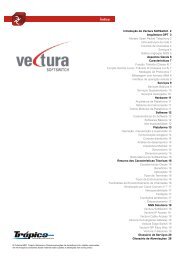- Page 2:
Michael Meier-BruggerIndo-European
- Page 10:
xPrefacePrefaceXIVolume 1. Introduc
- Page 14:
XIVPrefacePrefaceXVpresent text fil
- Page 24: 2 IntroductionSwitzerland. Within t
- Page 28: 6 Introductionby attending lectures
- Page 32: 10 Introductiontreated in their 'Mo
- Page 38: 16 Introductionthe statements that
- Page 42: 20 IntroductionOverview of the lndo
- Page 48: 26 Introductionfo und in lasos date
- Page 58: 36 IntroductionThesen zum Ursprung
- Page 64: 42 IntroductionE 501. The first exa
- Page 68: 46 lntroductionattestedexpected1 sg
- Page 72: 50 Introductionfonusfirst prelirnin
- Page 78: 56 Introduction5) A word on the con
- Page 82: 60 IntroductionI) However, our reco
- Page 86: 64 IntroductionThe Reconstruction o
- Page 90: 68 IntroductionThe Reconstruction o
- Page 94: 72Proto-Indo-European Phonologythe
- Page 98: 76 Proto-lndo-European PhonologyL 2
- Page 102: 80 Proto-lndo-European PhonologyPro
- Page 106: 84 Proto-indo-European PhonologyLat
- Page 110: 88 Prot(}-Ind(}-European PhonologyM
- Page 114: 92 Proto-Indo-European Phonologyjus
- Page 118: 96 Proto-lndo-European PhonologyC.
- Page 122: 100 Prote>-Inde>-European Phonology
- Page 126:
104 Proto-Indo-European PhonologyA
- Page 130:
was already discernible in Vedic gr
- Page 134:
112 PrO!-lnd-European Phonologysyll
- Page 138:
116 Proto-lndo-European Phonologyce
- Page 142:
120Proto-Indo-European PhonologyPro
- Page 146:
124 Protcrlndo--European Phonology3
- Page 150:
128 Proto-Indo-European Phonologydh
- Page 154:
132 Proto-Indo-European Phonologysg
- Page 158:
136 Proto-Indo-European Phonology't
- Page 162:
140 Proto-Indo-European PhonologyLa
- Page 166:
144Proto-lndo-European PhonologyLar
- Page 170:
148 Proto-lndo-European PhonologyLa
- Page 174:
152 Prot-lnd-European PhonologyLarg
- Page 178:
156 Proto-Indo-European PhonologyLa
- Page 182:
160 Prot-Ind-European Morphology3)
- Page 186:
164Proto-lndo-European MorphologyVe
- Page 190:
168 Prot()-lnd()-European Morpholog
- Page 194:
172 Proto-[ndo-European Morphology2
- Page 198:
176 Proto-lndo-European Morphology1
- Page 202:
1802 pI.3 pi.I-(S)dhyeProto-Indo-Eu
- Page 206:
184 Proto-lndo-European MorphologyV
- Page 210:
188 Proto-Indo-European MorphologyI
- Page 214:
192 Prot()-Ind()-European Morpholog
- Page 218:
196 Proto-Indo-European MorphologyF
- Page 222:
200 Prot-lnd-European Morphologywit
- Page 226:
204Proto-lndo-European MorphologyNo
- Page 230:
208 Proto-Indo-European MorphologyN
- Page 234:
212 Prolo-Indo-European Morphologyn
- Page 238:
216 Proto-lndo-European Morphology3
- Page 242:
220 Prot-lnd-European Morphologyand
- Page 246:
224 Proto-indo-European MorphologyD
- Page 250:
228 Proto-Indo-European Morphologyn
- Page 254:
232 Proto-Indo-European MorphologyN
- Page 258:
236 Prolo-Indo-European Morphology3
- Page 262:
240Prol-Ind-European Syntax1950; So
- Page 266:
244Prol-Ind-European SyntaxSenlence
- Page 270:
248 Proto-Indo-European Syntaxsente
- Page 274:
252Proto-lndo-European SyntaxVerbal
- Page 278:
256 Prol()-lnd()-European Syntaxper
- Page 282:
260 Proto-Indo-European Syntaxmiddl
- Page 286:
264Prolo-Indo-European Synlaxreferr
- Page 290:
268 Proto-lndo-European SYntaxsmell
- Page 294:
272Proto-indo-European S}Tltax'I' 4
- Page 298:
276Proto-lndo-European Syntax---t K
- Page 302:
280The Proto-lndo-European Lexiconw
- Page 306:
284 The Proto-indo-European LexiCOn
- Page 310:
288 The Proto-lndo-European lexiCOn
- Page 314:
292 The Proto-indo-European Lexicon
- Page 318:
296 The Proto-Lndo-European LexiCOn
- Page 322:
300The Proto-Indo-European LexiCOna
- Page 326:
304 Bibliography and Key to Referen
- Page 330:
308 Bibliography and Key to Referen
- Page 334:
312 Bibliography and Key to Referen
- Page 338:
316 Bibliography and Key to Referen
- Page 342:
320 Bibliography and Key to Referen
- Page 346:
324Bibliography and Key to Referenc
- Page 350:
328 Bibliography and Key to Referen
- Page 354:
332Bibliography and Key to Referenc
- Page 358:
336 Bibliography and Key to Referen
- Page 362:
340 Bibliography and Key to Referen
- Page 366:
344Bibliography and Key to Referenc
- Page 370:
348Bibliography and Key to Referenc
- Page 374:
352 Bibliography and Key to Referen
- Page 378:
356 Bibliography and Key to Referen
- Page 382:
360Bibliography and Key to Referenc
- Page 386:
364Bibliography and Key to Referenc
- Page 390:
368 Bibliography and Key to Referen
- Page 394:
372Bibliography and Key to Referenc
- Page 398:
376IndexIndex377centum languages L
- Page 402:
380IndexIndex381miscellaneous langu
- Page 406:
384Indextransformation (through lar





